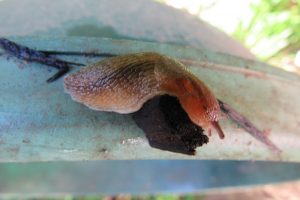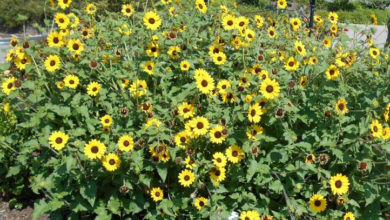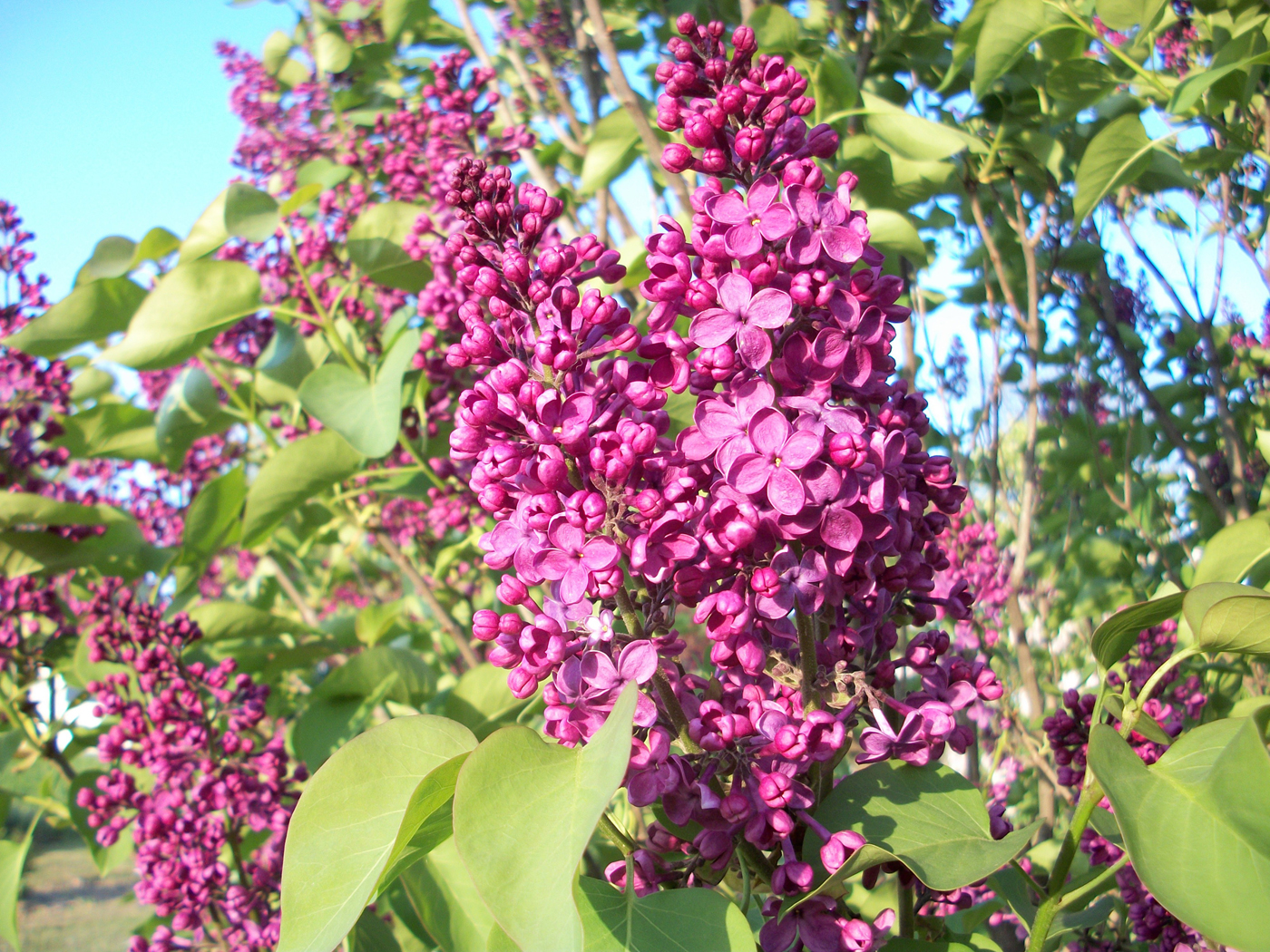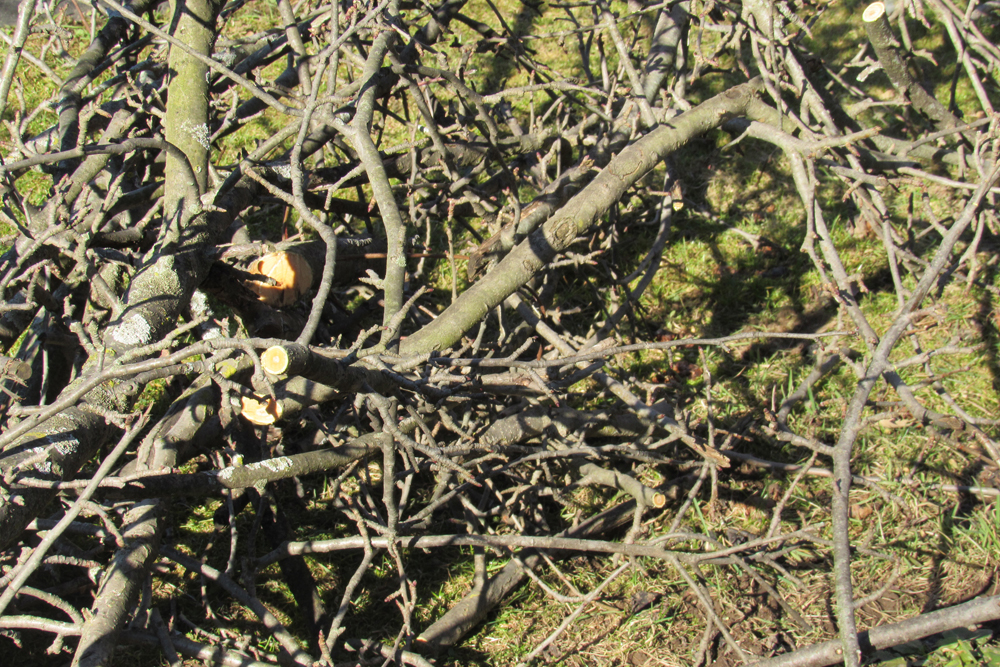Slug damage in the garden
Slugs and snails can do a surprising amount of damage in the garden. I have had plants “disappear” after the foliage and stems have been eaten down to the ground by slugs.
Slugs eat the leaves of many plants and their numbers generally increase during rainy, moist seasons; meaning you may be seeing more slug damage than usual this year.

According to the University of Minnesota Extension, slugs are a type of mollusk – related to clams and oysters – and are best described as snails without shells. They have soft bodies, brown or gray in color, and have eye stalks. They vary in size from one quarter inch to two inches long or longer and their presence in your garden is often marked by the silvery slime trails they leave as they move.
Slugs like shady moist garden areas and create irregularly shaped holes in leaves due to their file-like mouthparts. Early in the season, they munch on young growth and seedlings and later enjoy ripening fruits and soft vegetables.
The damage caused varies from cosmetic to severe plant stress and death of plants if feeding is extensive.
Snail eggs overwinter in protected sites in the ground – under plant debris, mulch or boards. The eggs hatch in the spring and early summer. Slugs may lay eggs throughout the summer depending on conditions. They are most active at night when it is cool and damp and their slime trails are most evident in the morning.
There are many ways to manage slug damage in the garden including cultural, trapping, barriers, biological and chemical.
University of Minnesota Extension recommends raking the garden early in the season to remove plant debris, leaves and slug eggs. Keep mulch depth to three inches and water only when necessary. Pruning lower leaves of plants and staking large plants can help eliminate hiding places for slugs. This also keeps the soil surface drier and promotes air circulation.
Some plant varieties which appear to be less affected by slugs include Astilbe, Lobelia, Vinca, Phlox, Campanula and Hemerocallis.
Trapping and hand-picking are two effective ways to lower slug numbers. Make sure you put out enough traps to protect your entire garden and check and clean them several times each week. To trap slugs, set out flat boards, damp newspapers, even flat rocks. The slugs will take shelter under these items and can be removed during day and killed.
University of Minnesota Extension recommends drowning slugs in soapy water, crushing or spraying with household ammonia diluted to a five or 10 percent solution. Beer and other ermenting food traps are also popular and effective. Sink jars, cans, or pans into the ground so the top is level with the ground and pour beer or a water and yeast mixture (one teaspoon yeast to three ounces of water) into the container. The odor attracts the slugs and they drown after falling in.
Barriers also work well and include copper strips or tape sold especially for slug control and diatomaceous earth, which is abrasive to the slug’s skin. Diatomaceous earth is most effective when it is dry – it will absorb moisture, lessening its effect.
Biological management includes animals which feed on slugs. Beetles, including ground beetles, rove beetles and fireflies eat slugs as well as toads, snakes, turtles, shrews, ducks, starlings and other birds. Remember, for natural enemies to be present, minimize or eliminate the use of chemical pesticides. If you do use pesticides, reduce the amount by spot treating small problems and always use strictly in accordance with label statements and directions.







